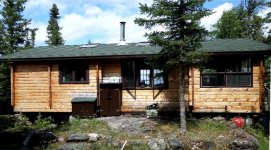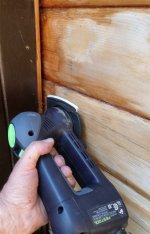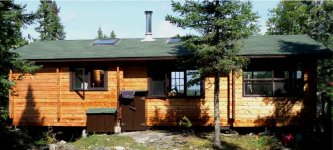Frank Pellow said:
I find that the Saphire lasts much longer than Cristal, particularly when subjected to rough use. I could be wrong but, it appears to me that the Saphire is cloth backed whereas Cristal is paper-backed.
The Festool
Abrasives Brochure is a good source of information about the composition of the various abrasives that Festool make available.
Cristal:
Grit: aluminum oxide
Bonding: phenolic resin
Impregnation: special bonding agent
Backing: b-wt, c-wt paper
Grit range: P24 - P120
Grit coating: open coated
Bonding level: open leveled
Saphir:
Grit: aluminum oxide
Bonding: synthetic resin
Backing: Fabric reinforced
Grit range: P24 - P120
Grit coating: semi-closed coated
Bonding level: closed leveled
About the various types of backing, it says:
Backing Material
Festool has different backings to match a broad
range of applications, from rapid material removal
to superior surface quality. Backing materials are:
Paper
Festool uses only top-grade paper of varying
weights to assure high tear resistance, durability
and superior surface quality. Using only high quality
materials assures the best and most reliable
work results; this saves you time and money. The
different paper weights we use are:
b-wt - 115 g/m2
c-wt - 130 g/m2 -
d-wt - 165 g/m2
e-wt - 185 g/m2
Fabric
Festool uses a special x-type woven fabric which
ensures its abrasives are long-lasting when used
under tough conditions and on uneven surfaces.
The fiber increases strength and prevents the
abrasive from tearing at the edges. This backing is
excellent for heavy duty jobs and results in a very
long operational life and considerable cost savings.
Fiber
Festool uses a special elastic fiber mat. This mat
is embedded with abrasive particles. Festool?s
name for this abrasive mat is Vlies. With Vlies, it?s
easier to achieve consistent results on complicated
contours.
Foam and fiber
A foam backing compensates for uneven pressure
to protect the surface and allow you to
achieve perfect results. Foam and fiber works
great on transitions, too. The foam efficiently
adapts to the work piece contour. This produces
reliable work results and high surface qualities.
The special velour on top of the foam assures the
best grit bonding and prevents the edges from
tearing. Like the foam, it is air permeable and
open pored. It extracts almost 100% of the particulate
through the backing and ensures a clear view
of the work piece. You will achieve better, more
reliable work results and less reworking.
Forrest




